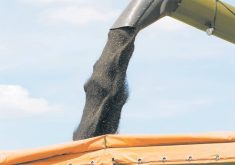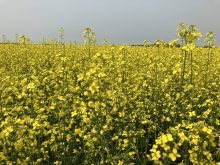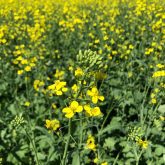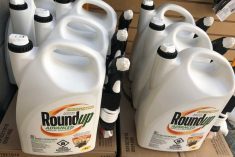Planting canola is expensive. Some estimates are as high as $450,000 per 1,000 acres, not including land and equipment costs.
So imagine the concerns of many farmers this spring when they encountered slow emergence with some canola hybrids. The most expensive crop ever planted threatened to crush the dreams of farmers eager for a comeback after last years’ drought.
The Canadian Seed Growers’ Association (CSGA) has resolved to do something about the problem. At its recent annual general meeting, the organization passed a resolution calling for the CSGA to work with Seeds Canada and other seed industry partners to make vigour testing standard, and to see a minimum standard of vigour developed for major crops.
Read Also

Moo translator and methane measures: There’s an app for that
Dalhousie University researchers use artificial intelligence to create new dairy farm apps that analyze cattle sounds and measure methane.
“Most canola growers know about some of the difficulties that were experienced with some of their crops this year,” said Saskatchewan Seed Growers’ Association President Mike Shewchuk, who spearheaded the resolution.
“Canola came out of the ground that didn’t have leaves on it, and just sat there for weeks on end. A vigour test would provide a lot of transparency regarding the seed that we’re putting in and paying a lot of good money for. Vigour testing would be a great starting point.”
Shewchuk said the canola emergence problem spread like wildfire on social media. Farmers posted images of variety comparisons claiming stunted hybrids. He said it is yet to be determined who is responsible for the potential losses.
“But I just did receive a call probably a week ago that there is a third party looking into it now,” he said. “Sounds like there is something being recognized now. There is some action being taken. I’m not nearly as agitated as I was when I wasn’t getting any answers.”
BASF says it’s aware of the issue. A mid-June statement from the company noted some InVigor hybrids may have had challenges that hindered crop establishment.
Different areas affected
“Our dedicated team is reviewing possible contributing factors that could hinder crop establishment, as well as whether there are demonstrable geographic, environmental and/or other patterns or trends,” the spokesperson said. “We are committed to examining the situation and when our review is complete, we will provide an update to our customers.”
Every seed company has its own method of vigour testing, said Shewchuk, noting he doesn’t want to single out specific companies or brands. However, he doesn’t think the issue is related to environmental factors in Saskatchewan.
“Honestly, we’ve had some of the best growing conditions up until July,” he said. “We’ve seen some outstanding growing conditions. But that varies across Western Canada. Other regions experience different things.”
Slow emergence may cause total crop failure in some cases, said Shewchuk, but it depends on fall frost timing.
Another problem with slow emerging, weak canola is the plant’s inability to withstand flea beetles. Many plants were lost for this reason, said Shewchuk.
As for standardized vigour testing for major crops, Shewchuk said he isn’t sure if the process falls under government or industry jurisdiction. He said he was unable to get vigour results from any company, only germination results.
Establishing successful crops depends on several variables, says the Canola Council of Canada. Crop rotation, trash management, seedbed preparation, seeding date, seeding rate, fertility and weed control can each have an impact.
“Seed quality, germination, seed and seedling vigour are also important factors in the establishment of canola stands under the wide range of growing conditions that can occur,” the council says on its website.
Mike Ammeter, who farms near Sylvan Lake and is a director of the Alberta Canola Producers Commission, said slow emergence wasn’t a big problem on his farm this spring. It was a problem further east and further south in areas with less moisture. Slow-flowering plants were the problem on his farm.
“It’s not something we fully understand yet,” he said. “I look for full flowering right around Stampede time. They just kind of coincide — canola should be in full blossom. Of course, we always have one eye on the calendar. We get to September and there’s risk of frost, and a shortened growing season is always looming on the horizon.”
Some farmers may have jumped the gun in blaming one company for poor crop establishment, said Ammeter.
“I think that has broadened,” he said. “It’s not exclusive to one company. I think it’s far more complex than that. I’ve heard the theory of a hormonal imbalance in the plant that was brought on by drought stress. That’s a leading theory. The other theory is there’s an issue with the seed. The seed companies are well aware of this.”
Would standardized vigour testing help farmers?
“The more information I have, the more I can eliminate variables,” said Ammeter. “If I were to buy my seed — if there was a standardized vigour test — I can use that as information in terms of how heavy do I need to seed? Maybe I need to adjust my seeding rates.”















